Kushti
India
Train mind, skill, and body.
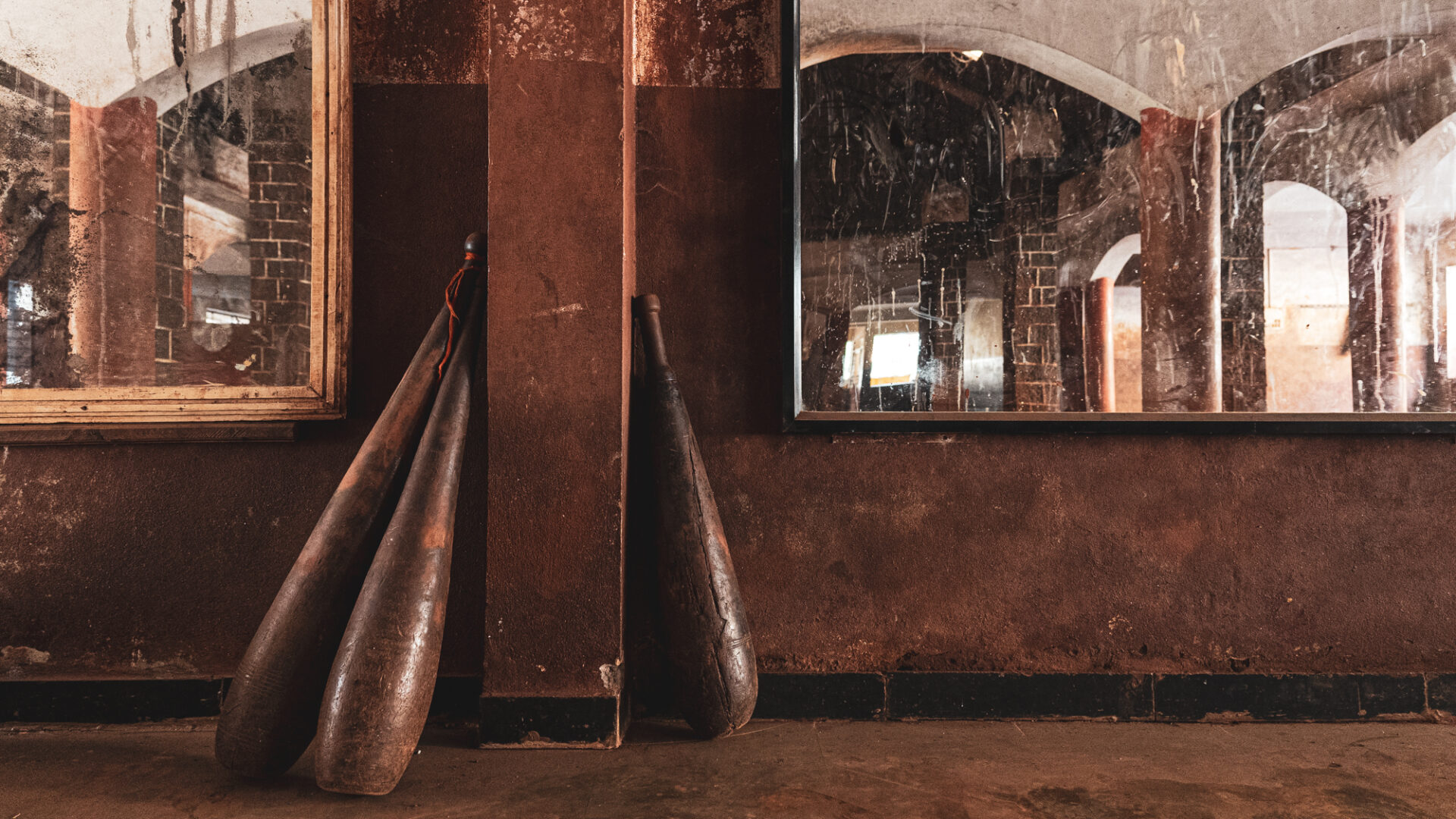
Within these akharas, wrestlers—ranging from young boys beginning their lifelong journey to men in their physical prime—form tight-knit, deeply supportive communities. Bonds are often so strong that fellow pehlwans, especially the revered guru (teacher), are regarded as family. This profound camaraderie fosters discipline, mutual encouragement, and a shared commitment to excellence.
Training is rigorous and steeped in tradition. Wrestlers train using traditional implements such as the gada, a heavy, mace-like club swung with control and strength, and the jori, a pair of distinctively shaped wooden clubs used to build coordination and stamina. Exercises like rope climbing, stone lifting, and bodyweight drills require not only physical power but also unwavering mental resilience. These demanding routines forge both formidable physiques and resilient minds.
Yet the discipline of Kushti extends far beyond the wrestling pit. Wrestlers lead austere lives marked by abstinence from alcohol, tobacco, and sexual activity—practices rooted in the belief that preserving vital energy is essential for mastery. Their lifestyle typically includes early mornings, simple living, and diets focused on natural, nourishing foods to sustain the demands of daily training. This way of life reflects the deep spiritual foundation of Kushti, where purity of body and mind is inseparable from physical mastery.
Wrestlers often begin each training session with prayers and offerings to Hanuman, the monkey god symbolizing strength, devotion, and courage. Seeking his divine blessings underscores the spiritual dimension of Kushti and its enduring connection to India’s religious heritage.
Kushti remains a powerful symbol of resilience and cultural pride across India. While states like Maharashtra and Haryana are especially known for their vibrant and deeply rooted Kushti traditions, the sport continues to thrive nationwide—from the plains of the north to the southern states—each region nurturing its own local variations and dedicated akharas. The sounds of wrestlers training in the mud and the excitement of local competitions echo through both urban and rural landscapes.
As the dhols (traditional drums) thunder during matches and hometown crowds cheer for their local heroes, Kushti endures not as a relic of the past, but as a living, breathing culture—rich in discipline, honor, and community spirit—passed down through generations and proudly carried into the future.
* Akhara refers to a training ground with accommodations, training, and facilities for Indian martial arts.
*top photo : The tool called Mudgar, along with Samtola and Gada, has been traditionally used as a tool for training the body.
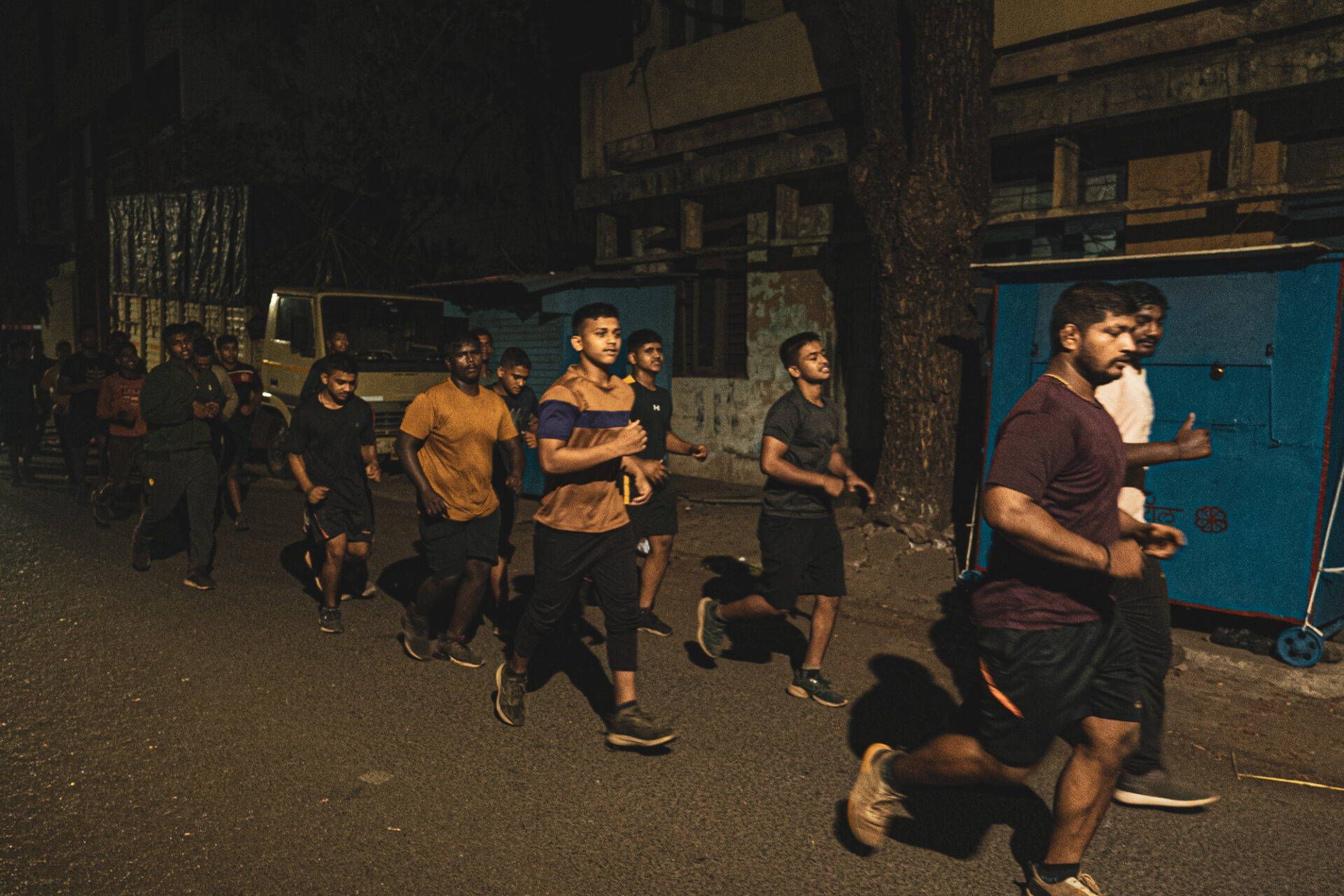
Upholding a rigorous daily routine, which begins as early as 4 am, wrestlers engage in intense training sessions encompassing wrestling practice, weightlifting, and hundreds of push-ups.
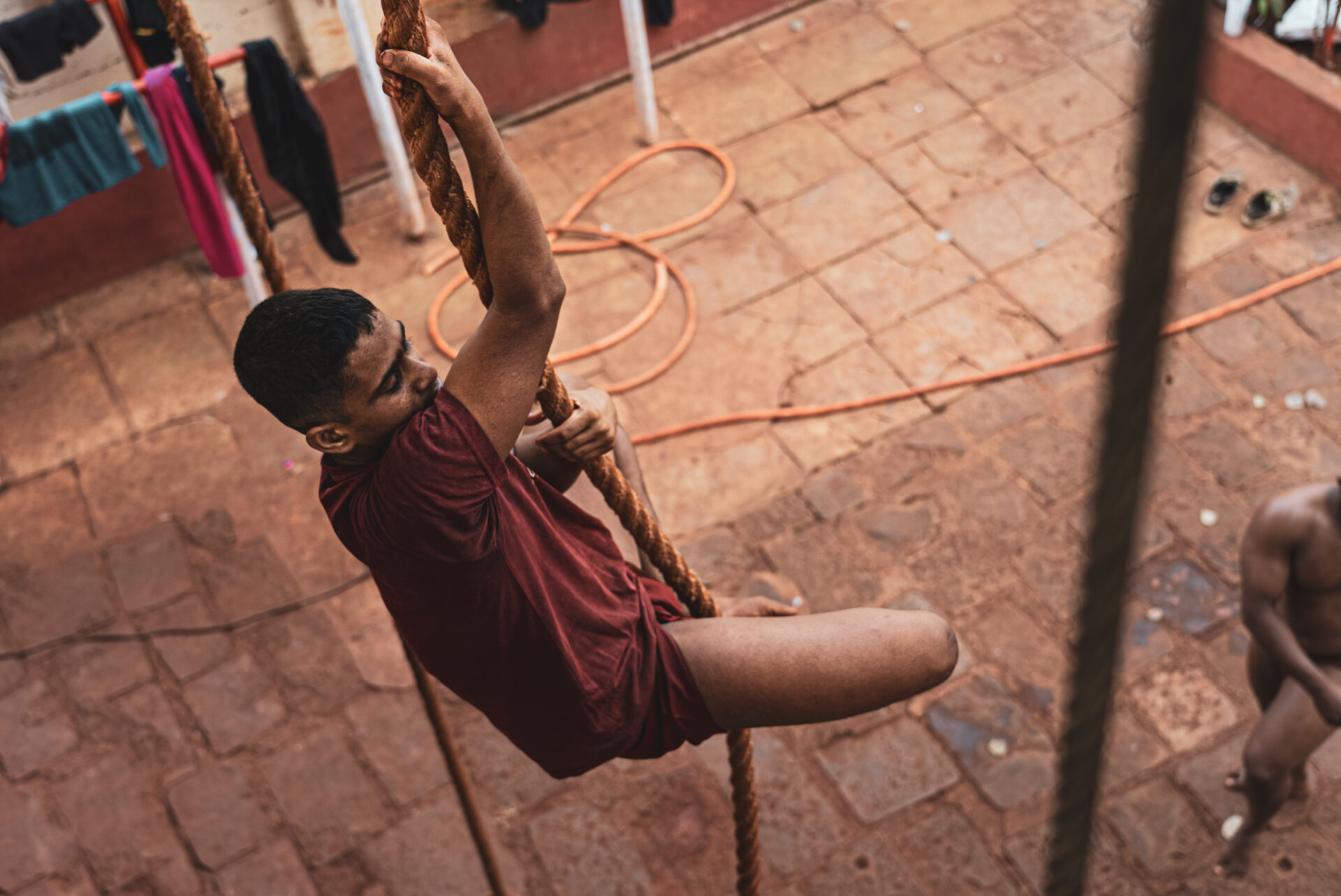
Training methods have not changed since ancient times.
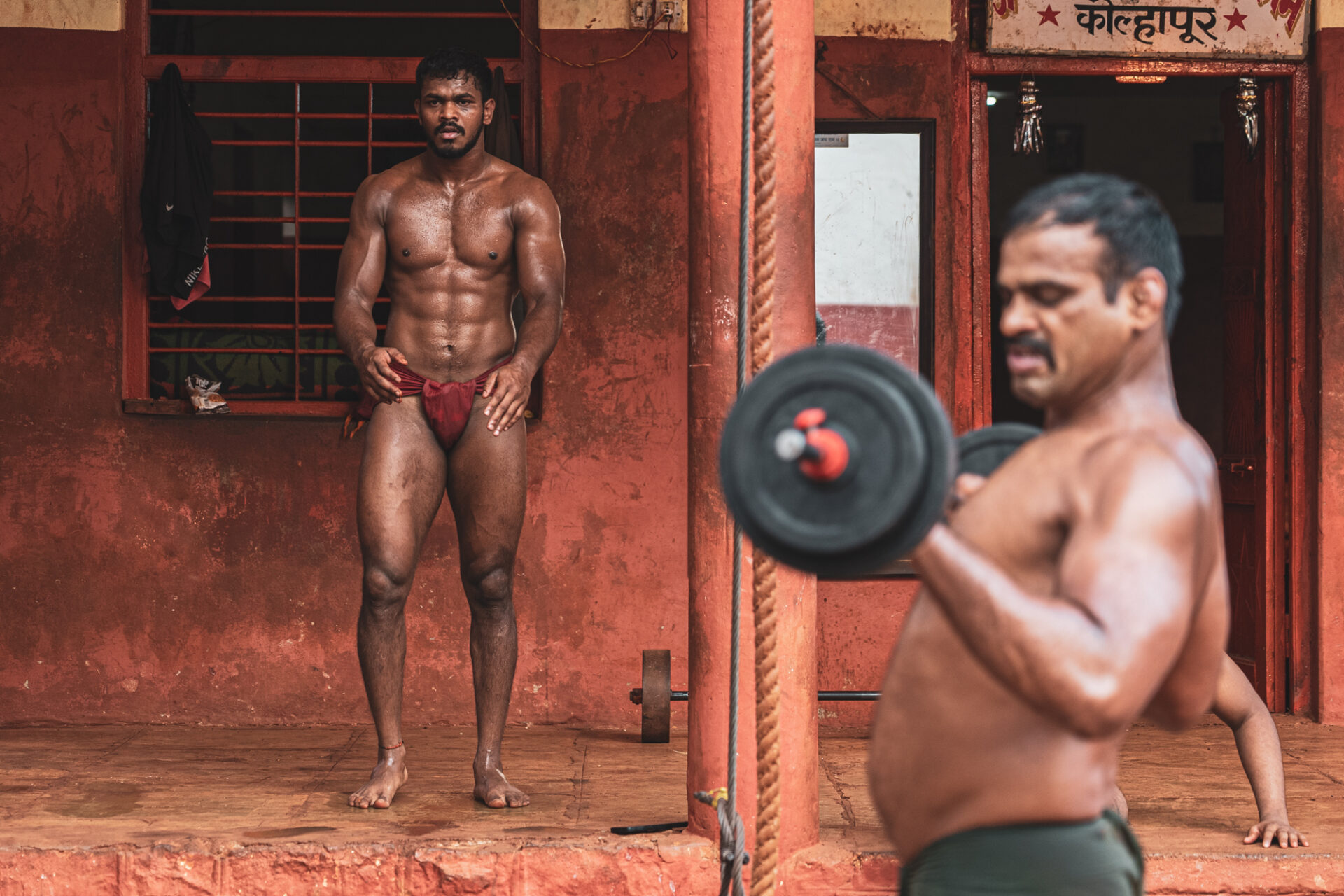
Hindu squats and barbell lifting.
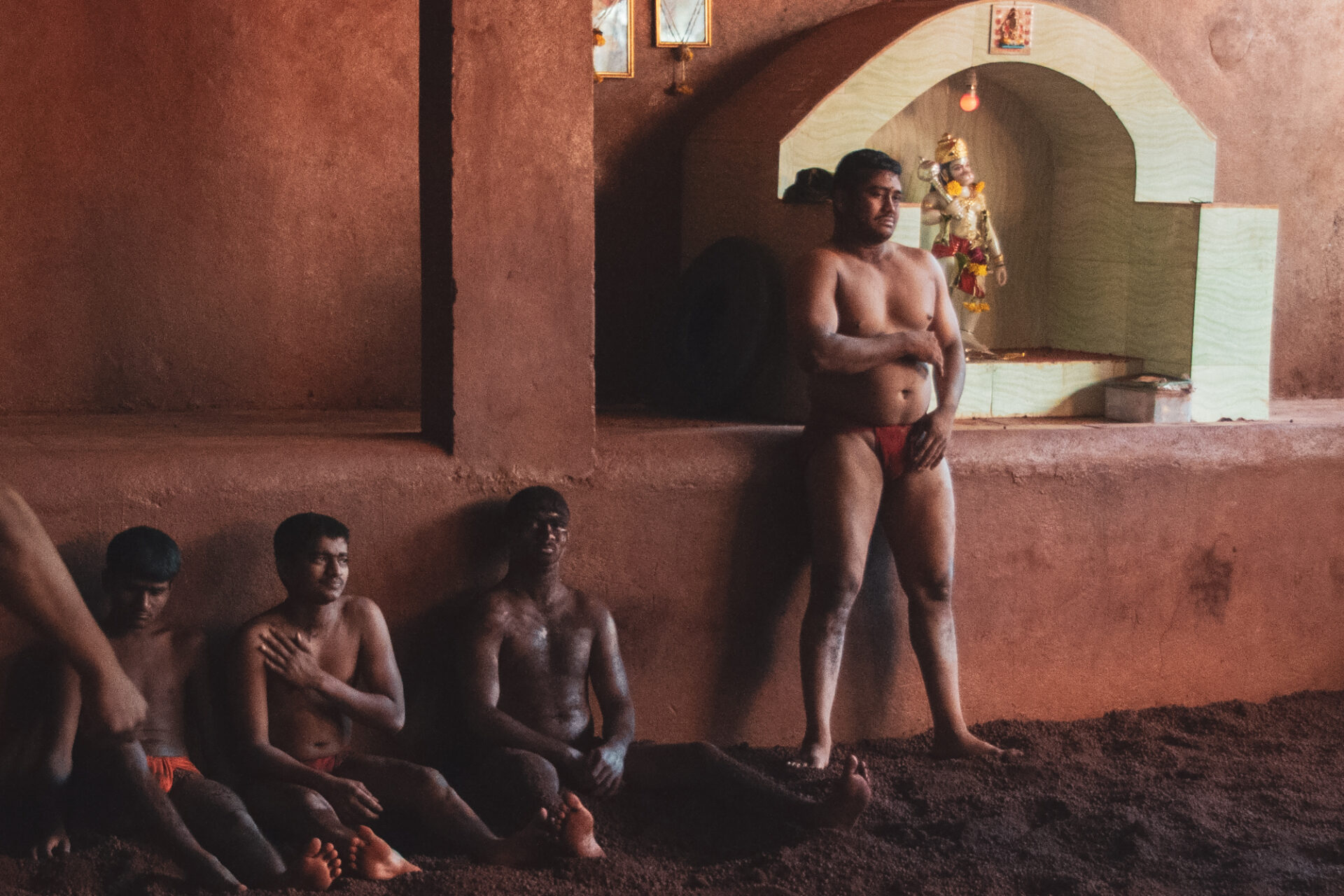
Inside the training ground, statues of Lord Hanuman are placed, watching over them.
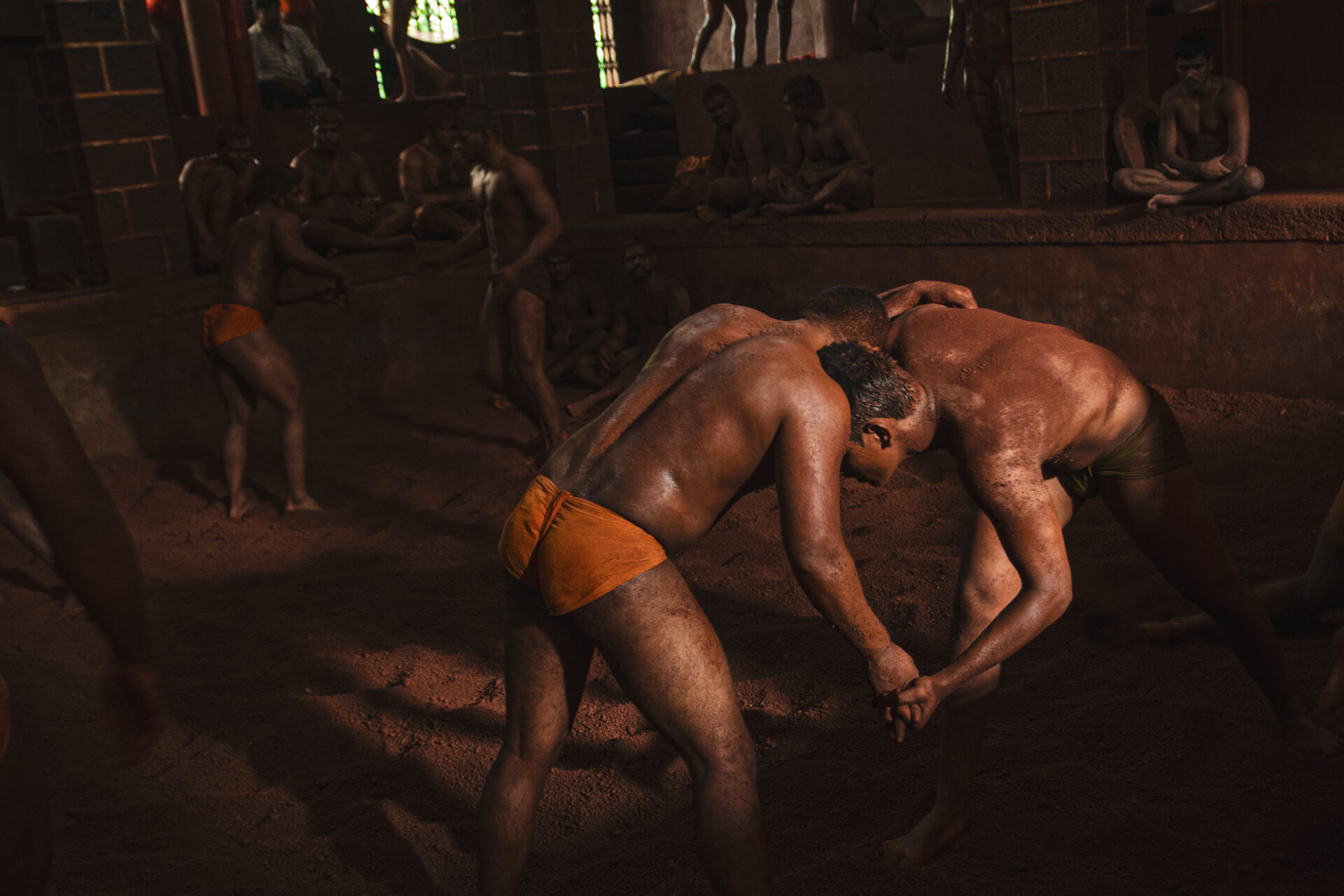
The origin of wrestling dates back to at least 15,000 years ago, as evidenced by cave paintings.
Around 300 BCE, the prototype of Hinduism began to take shape, and subsequently, through integration, wrestling evolved into Kushti.
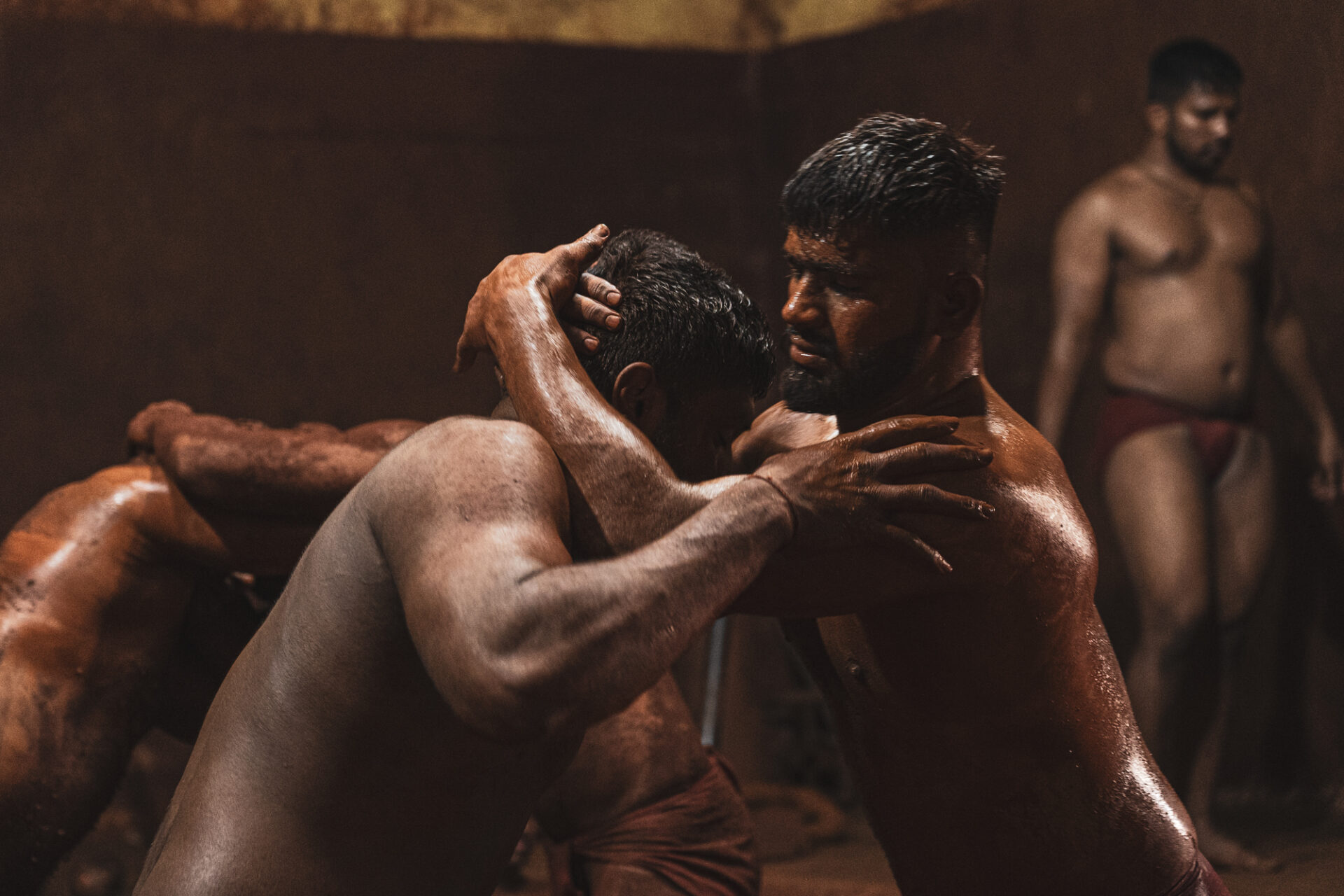
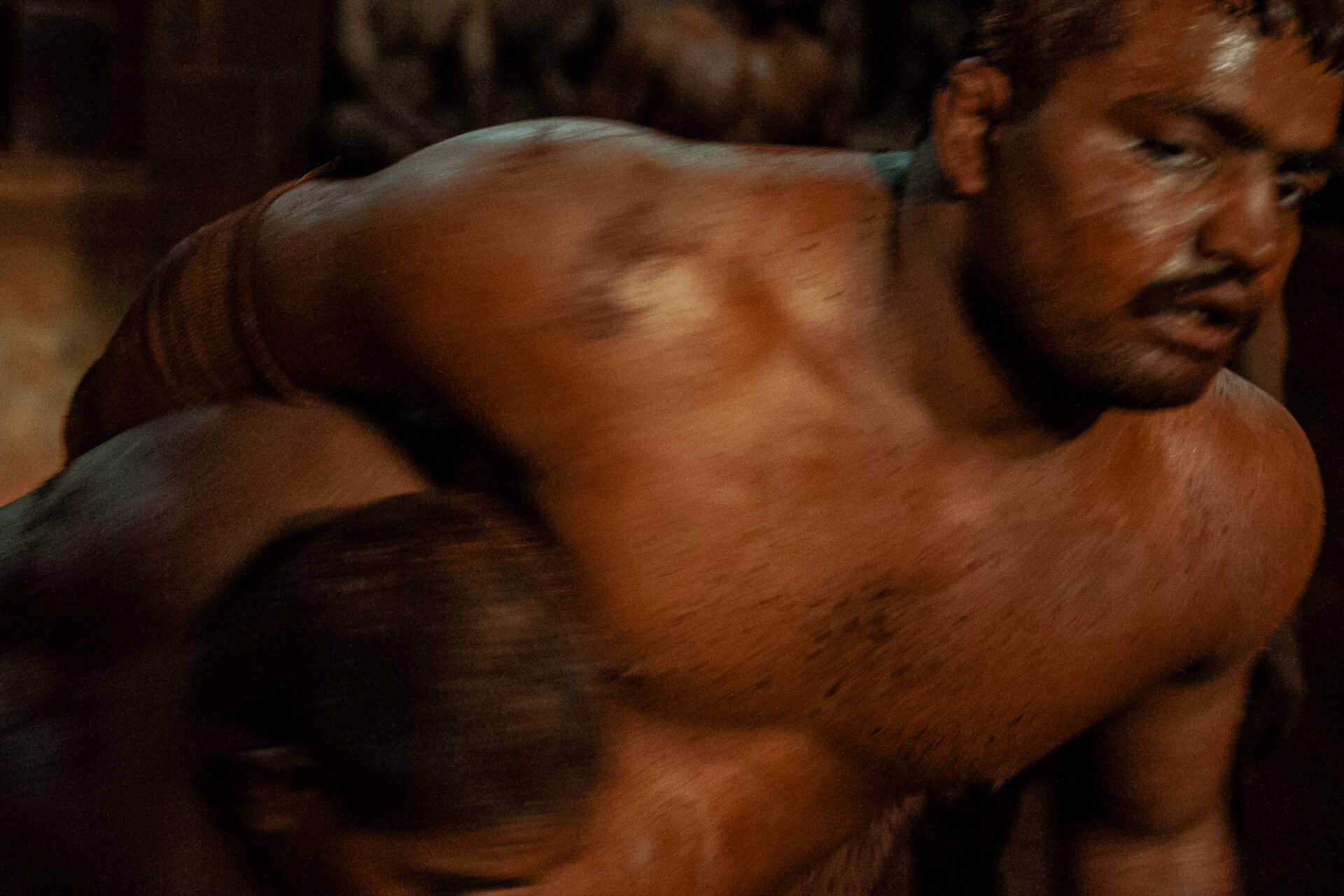
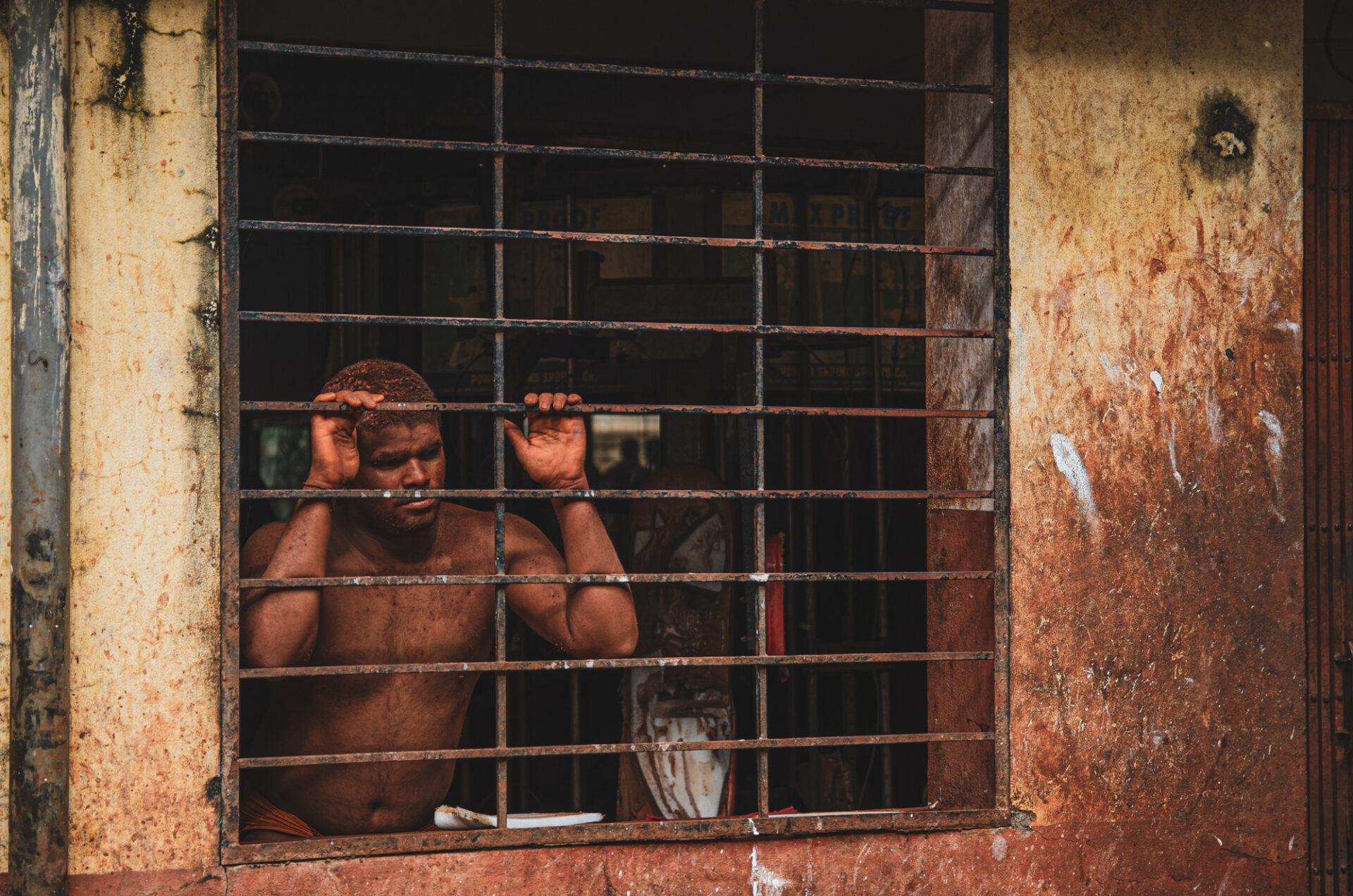
The training area is sweltering. It gets as hot as a sauna in the summer.
A short break.
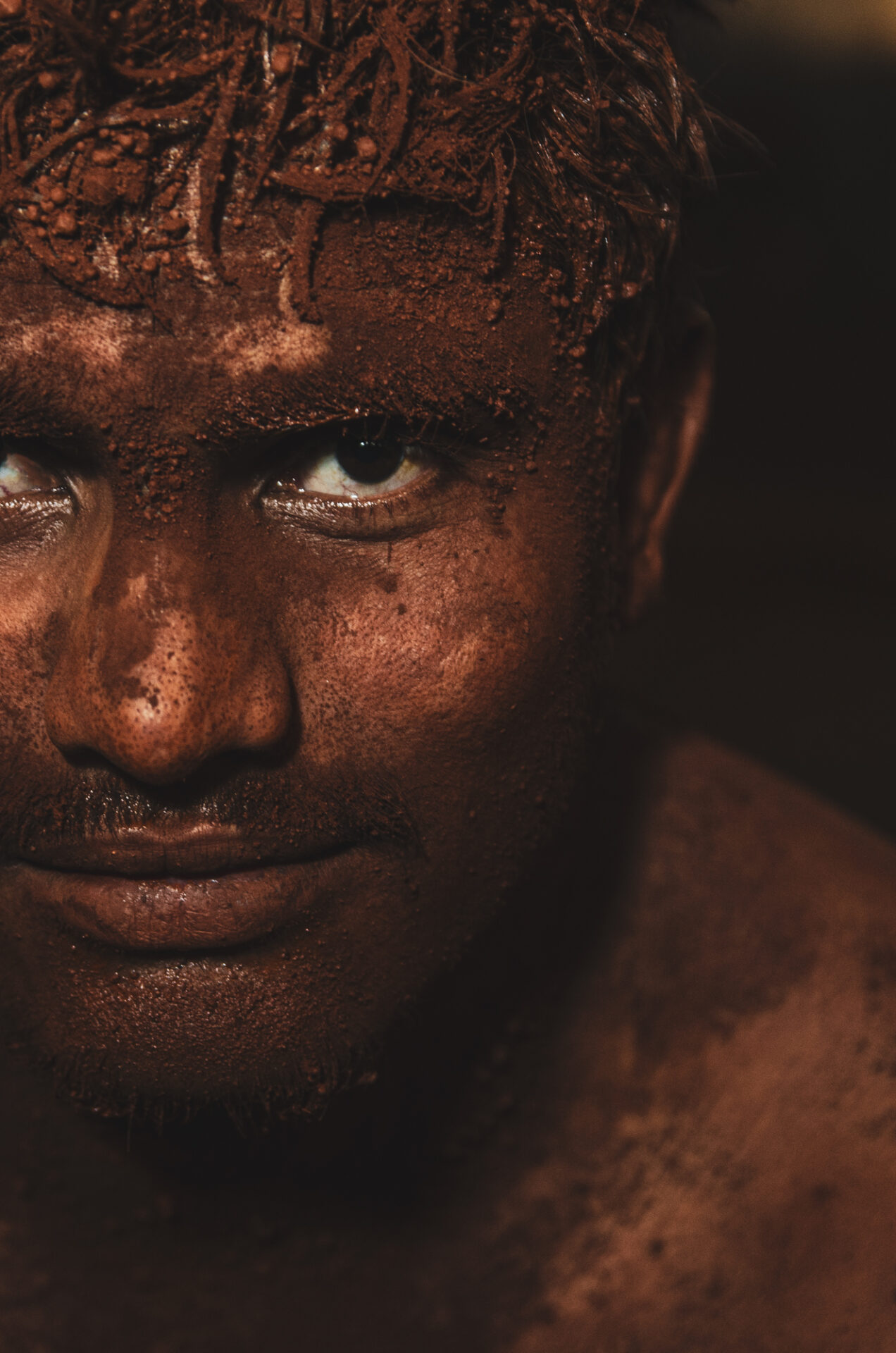
In the soil of the Kushti training ground, a mixture of yogurt, butter, and turmeric powder is used as clay.
When it starts to dry, water is sprinkled on it.
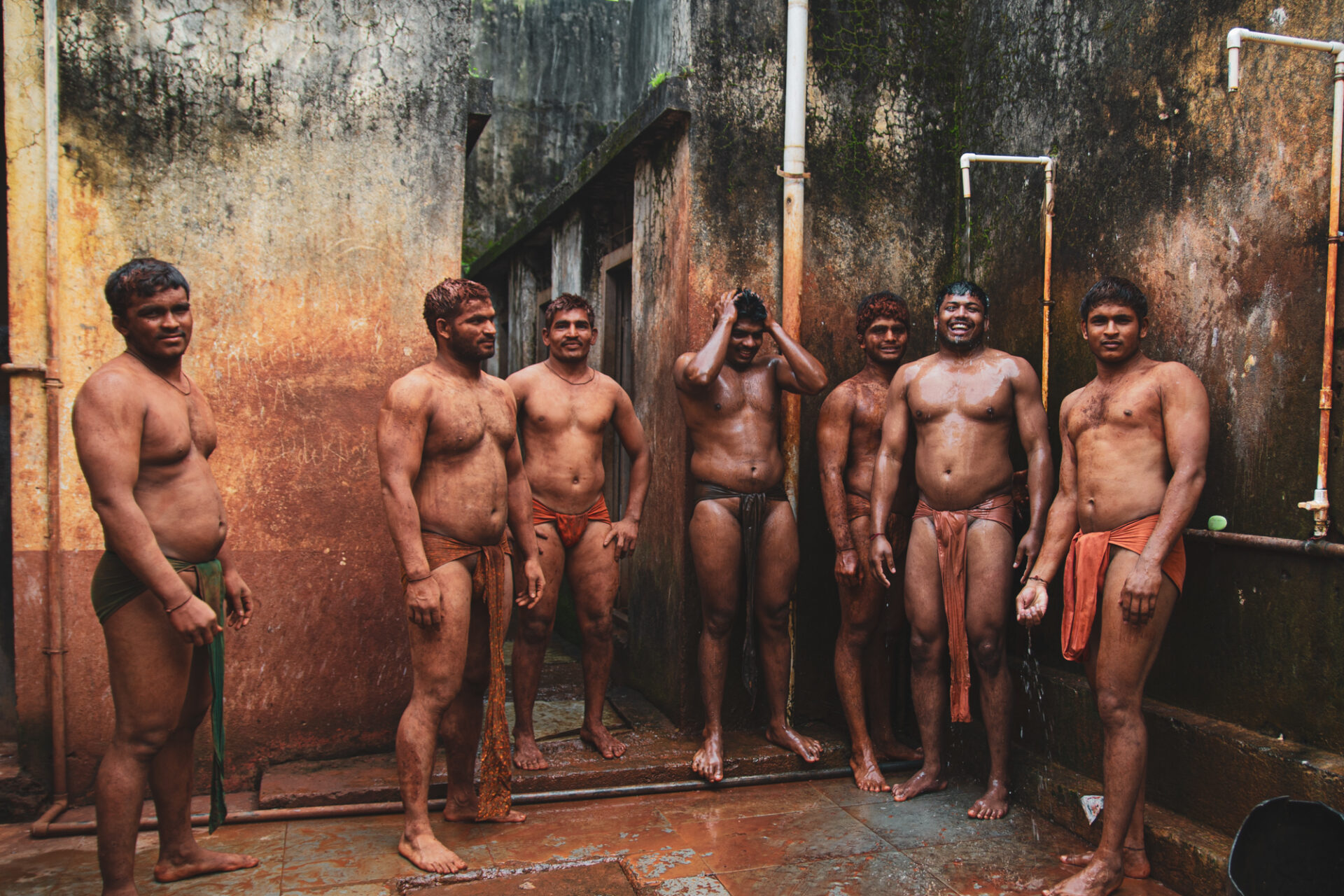
Wash off the red soil clinging to your body in the shower.

Their diet, known as "khurak," comprises crushed almonds, milk, ghee, and vegetables, forming the cornerstone of their nutritional regimen.
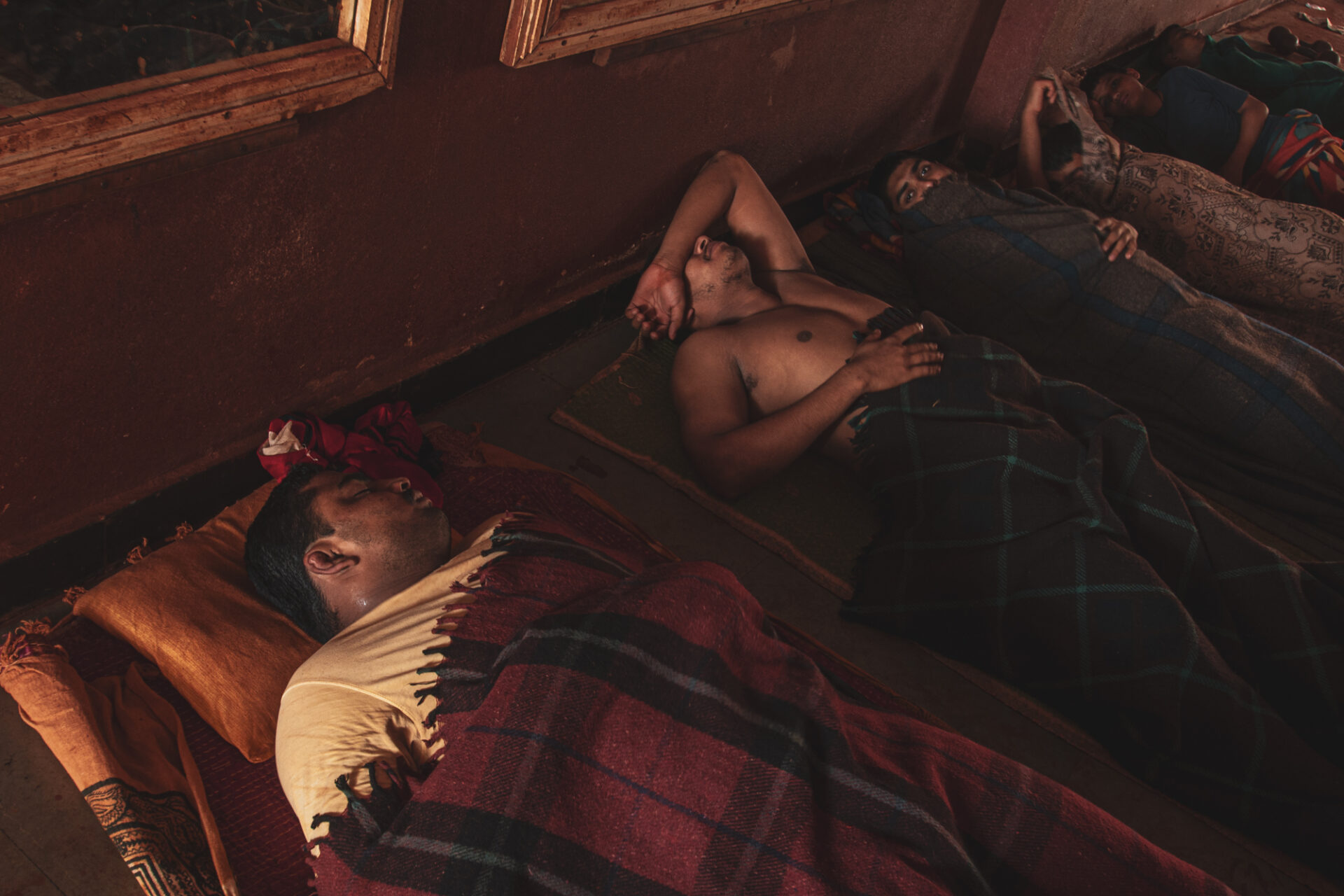
Napping is essential time for recovering both physical and mental energy.
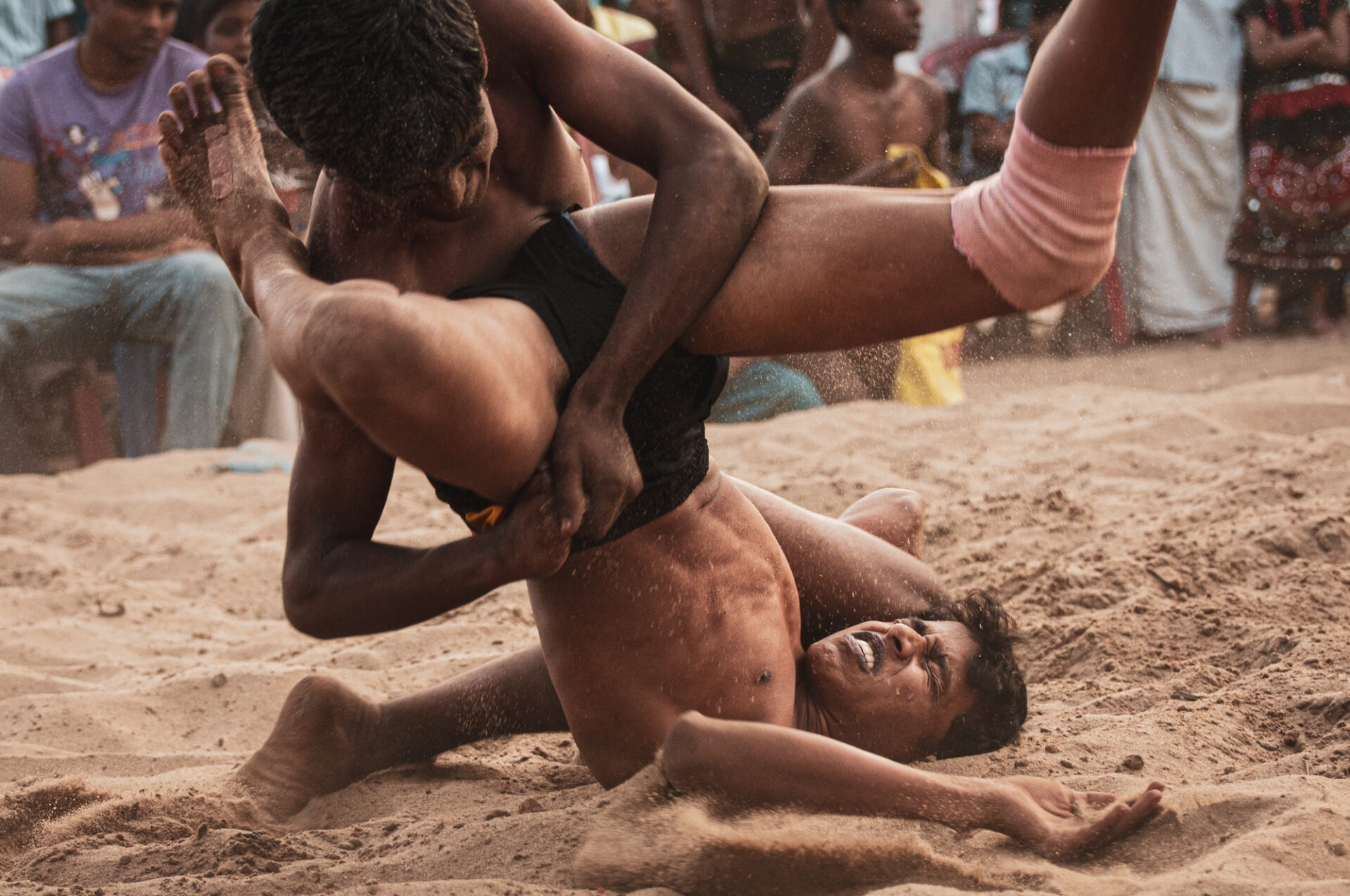
In every match, heroes are born, becoming idols for children to admire.
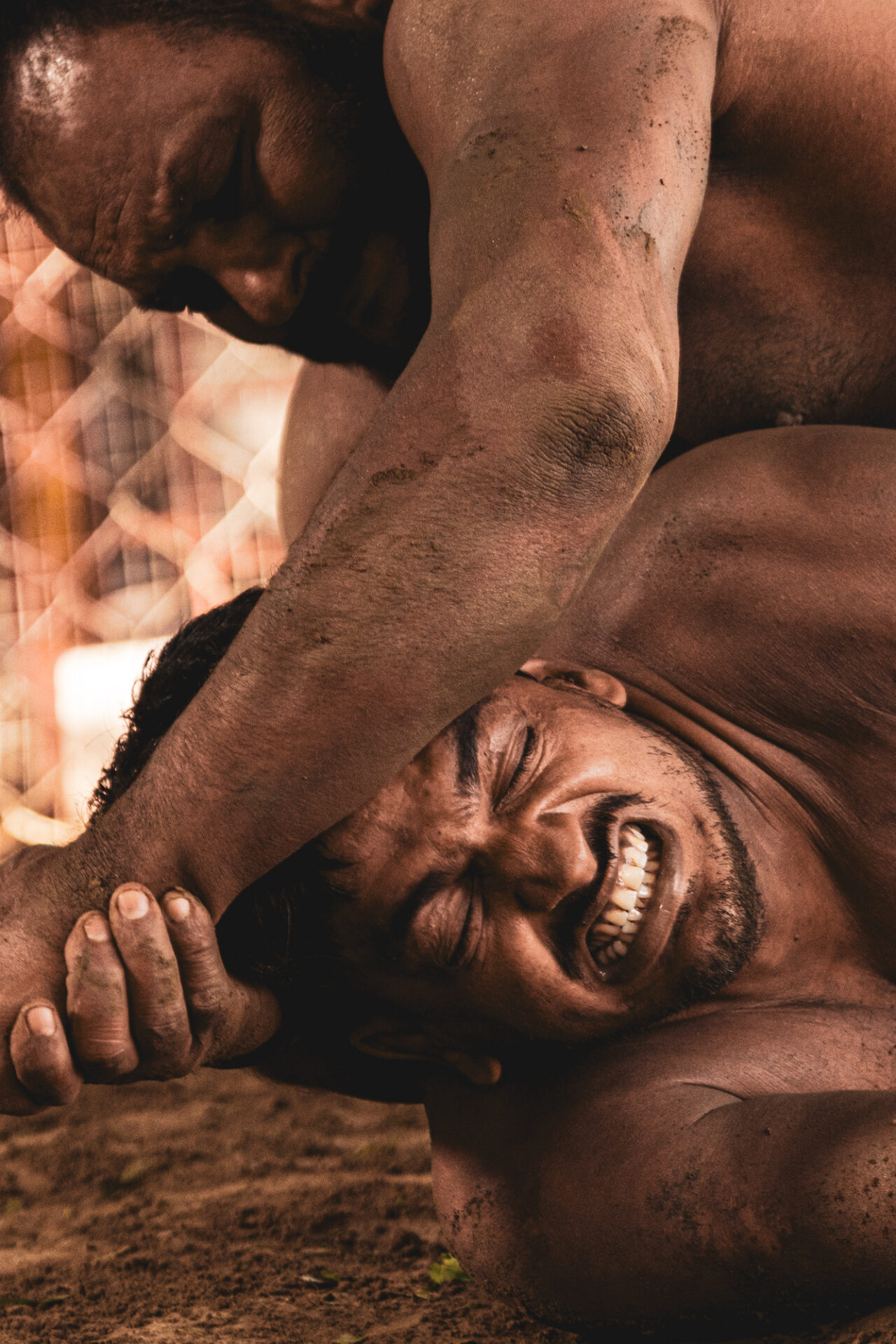
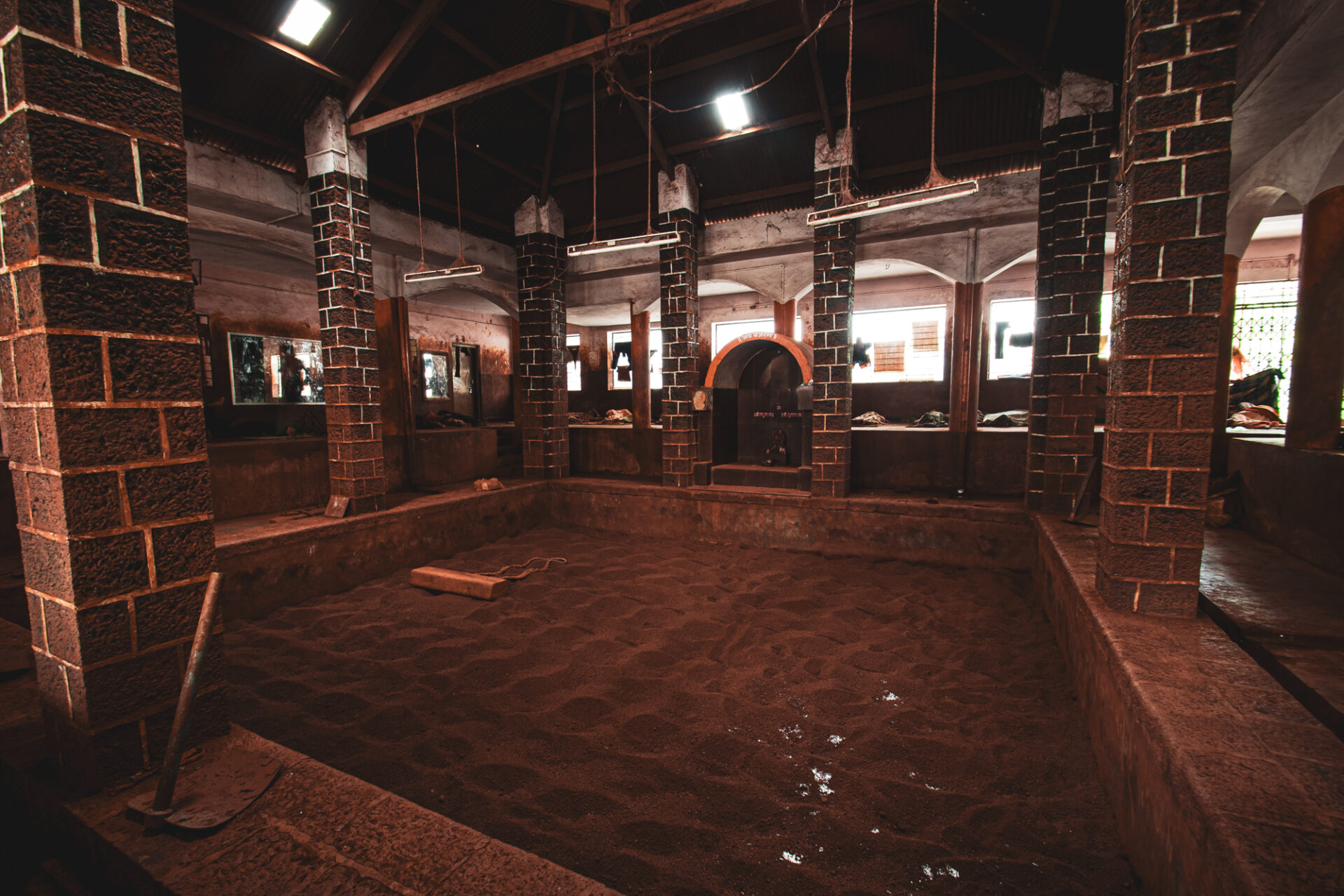
Akhara has been watching over thousands of athletes.
It is a sacred place, accessible only to those involved, and one must be barefoot to enter.
Returning to the Akhara I visited in 2011, I showed them the photos I took back then, but none of the members from that time remained.
However, their Akhara remained intact. Perhaps due to the nation's endorsement of victories in wrestling at the Olympics, or the widespread popularity of the 2016 Indian wrestling film "Dangal," I felt a shift towards modern wrestling training over Kushti.
It seems they may be transitioning from training in Kushti, which hones mind, skill, and body, to creating winners in the Akhara. Nonetheless, the training in Kushti remains incredibly powerful, as always.
So this time,I was allowed to observe for one week, and I visited twice starting from 4 a.m.
On the first day, they tirelessly did push-ups, sit-ups, and back exercises for almost an hour without rest.
The second day, they jogged for an hour, then as the sun rose, they began playing soccer. Jogging seemed to be for endurance, while soccer for explosive power training.
However, I was surprised to learn that these activities were just warm-ups.
